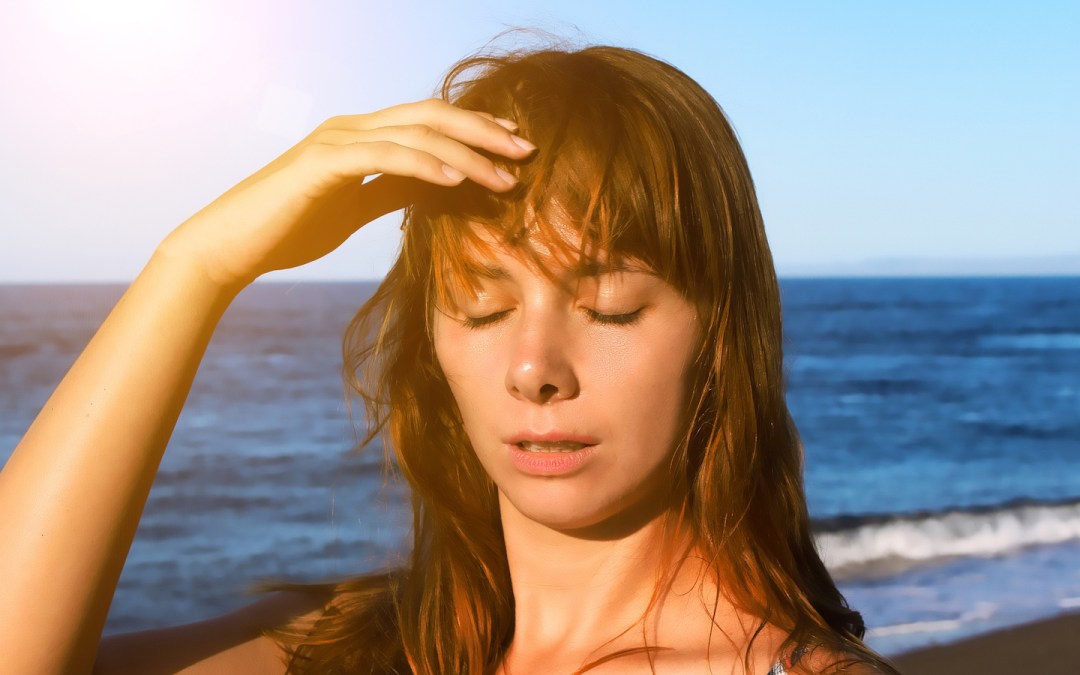Being active during the summer and enjoying beautiful weather are among the best parts of the season. However, it’s important to keep your safety in mind when spending time in the heat. The sun’s rays are stronger than we notice, making both heat exhaustion and heat stroke very real dangers. Of the two, heat exhaustion is less severe, but it can easily progress to heat stroke and cause significant damage. It’s important to understand how these conditions occur and what you can do to avoid them.
Heat Exhaustion
There are two types of heat exhaustion. One results from inadequate hydration. Symptoms can include dehydration, headache, weakness, and even loss of consciousness. Salt depletion can also lead to heat exhaustion. This more typically happens during overexertion on a hot day. Nausea, vomiting, muscle cramps, and dizziness are among the most common signs.
If you are experiencing heat exhaustion, move immediately to a cool, shaded area. If possible, take a cool shower or use fans and ice to cool down. Drink plenty of liquids, but avoid caffeine or alcohol. Rest until you start to feel better, and avoid returning to a very hot space for as long as you can. It may be wise to avoid the sun or strenuous exercise for a few days. If symptoms persist, speak to your doctor.
Heat Stroke
Failure to properly rest after experiencing signs of heat exhaustion can lead to heat stroke. If your body temperature rises to 104 degrees Fahrenheit or above, it’s considered heat stroke. You must seek medical treatment if you think you are have heat stroke, as it can rapidly cause permanent damage to your brain, heart, kidneys and muscles. If you are experiencing high body temperatures of these levels in conjunction with confusion, rapid breathing, racing heart rate, altered sweating, or headache, seek immediate medical attention.
No matter your age or physical status, it’s always wise to be cautious when out in the sun or the heat. Dr. Fatima Hussain of EHE points out that people aged 60 and older tend to be among those worst affected by extreme heat. In addition, individuals who are obese or suffer from hypertension or diabetes are more susceptible to heat stroke.
Prevention
Proper hydration goes a long way toward preventing heat stroke. It’s important to drink plenty of fluids before, during, and after exercise or any amount of time spent outside on a hot day. Be careful with alcohol consumption, especially in conjunction with strenuous exercise or time spent outdoors. Caffeine can also dehydrate you, so try to avoid it before time in the sun.
Other ways to prevent heat stroke include going indoors for periodic rests or moving into a shaded area. Dr. Hussain explains that this can have a major impact, since the shade decreases heat stress. Keep in mind, however, the need to consume plenty of water or other hydrating liquids even if you are resting in the shade.
When you are outside, prepare for the heat and for the sun’s rays. You should always wear sunscreen, as sunburned skin less effectively cools your body. In addition, it’s essential to have cool, loose-fitting clothing that allows your skin to breathe. Finally, whenever possible, avoid exertion during the hottest parts of the day.
Heat stroke is largely preventable with proper planning and self-care. Exercise and time spent outdoors can be enjoyable and comfo

